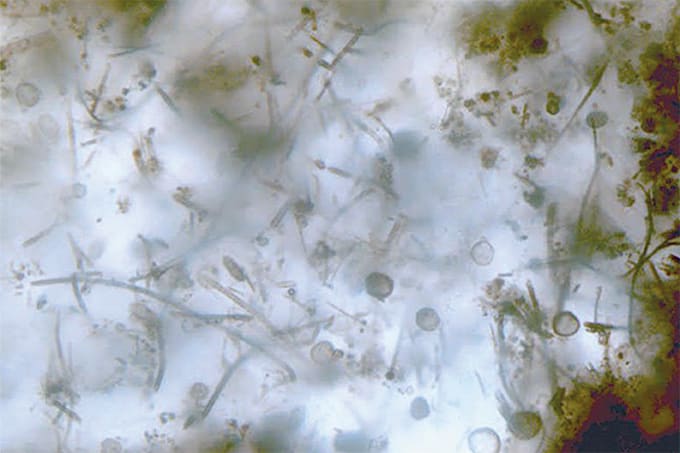Chemists in toxicology labs are always looking for ways to improve detection of illegal drugs – especially as lengthy sample preparation procedures often cause delays that can compromise the analysis. In a recent paper (1) – and in collaboration with Waters Corporation – the Botch-Jones research group at Boston University School of Medicine slashed the time it takes to analyze illicit substances. “In forensic toxicology, we are challenged with providing comprehensive analytical testing as efficiently as possible,” says group leader Sabra Botch-Jones. “For this research we wanted to reduce the amount of time required to prepare samples without sacrificing analytical sensitivity.” And the time saved was indeed significant – illegal drugs were identified in urine samples in fewer than 20 minutes, compared to traditional techniques that can take hours for sample preparation prior to analysis.
The research team decreased sample preparation time by using a microextraction technique that eliminates the lengthy evaporation step typically following solid phase extraction. “Most traditional single dimension chromatography techniques would not be able to handle the high concentration of organic solvent used in this type of extraction,” explains Botch-Jones. “With 2D-LC and a process called ‘At-Column’ dilution, a sample extract containing a high organic solvent content can be directly introduced in the LC system, which saves a significant amount of time.” The Botch-Jones lab have since completed several additional studies evaluating the use of the technique with complex matrices, such as bone, tissue and blood, and have demonstrated the ability to extract cocaine and metabolites from bone samples at trace concentrations. In addition, they have evaluated the use of the technique with new psychoactive substances, such as potent NBOMe compounds. The team plans to share its methods with the analytical and forensic toxicology community, to help increase sample throughput in analytical toxicology laboratories – and ultimately hopes to see them used in forensics and law enforcement. “It was incredibly rewarding for our group to be a part of a research effort that will have such a positive impact on the analytical community,” says Botch-Jones. “We feel that multidimensional liquid chromatography using this microextraction technique will grow in popularity.”
References
- C Mallet, S Botch-Jones, “Illicit drug analysis using two-dimension liquid chromatography/tandem mass spectrometry”, J Anal Toxicol, 40, 617–627 (2016)




